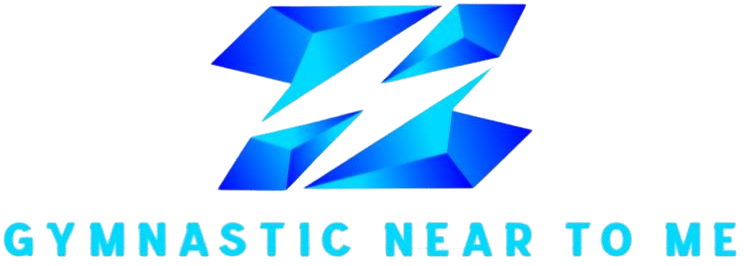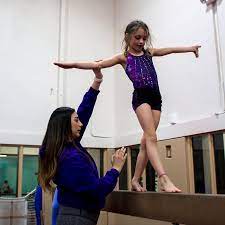If your child has just started gymnastics and is loving every flip and roll, you’ve probably started to hear phrases like “Level 1,” “Rec classes,” or even “competitive stream.” For many parents, understanding gymnastics levels can feel like decoding a new language.
But don’t worry—it’s simpler than it sounds.
Gymnastics levels are a way to group children based on their skill development, confidence, and readiness to learn more advanced movements. These stages provide structure, set goals, and help coaches teach skills safely and effectively.
In this article, we’ll break down how levels work in gymnastics for kids, what each stage typically includes, and how you can support your child as they progress—whether they’re just having fun or eyeing a future competition floor.
Why Do Gymnastics Levels Matter?
Levels in gymnastics aren’t just a badge of honour—they’re a framework that ensures kids:
- Learn in a safe, developmentally appropriate way
- Progress through skills at their own pace
- Gain confidence as they achieve milestones
- Feel a sense of accomplishment along the way
While programs may differ slightly between clubs and states, most recreational gymnastics follows a similar staged approach. Competitive gymnastics, on the other hand, adheres to official pathways set by governing bodies like Gymnastics Australia.
Recreational vs. Competitive Gymnastics Levels
Before we dive into the levels themselves, it’s helpful to understand the two main streams:
1. Recreational Gymnastics
This is where most children begin. Classes focus on fun, fitness, and learning foundational skills in a non-competitive setting. Children are grouped by age and/or ability, and move through levels based on readiness—not pressure.
2. Competitive Gymnastics
Children who show strong skills, focus, and interest may be invited into a more structured training stream. Competitive levels follow a national or state curriculum with set routines, performance assessments, and the option to compete.
Many kids stay in recreational classes for years—and that’s great! Not every gymnast needs to go competitive. The key is that they’re enjoying movement and progressing with confidence.
What Are the Typical Gymnastics Levels?
Let’s break down how gymnastics for kids is generally structured at the beginner and intermediate levels.
Level 0 / Kinder Gym (Ages 2–5)
These classes are all about fun and motor skill development. With parental involvement for the youngest, kids explore:
- Jumping, crawling, climbing
- Basic balance (walking on low beams)
- Rolling and gentle swinging
- Listening and taking turns
Level 1 (Ages 5–7)
The starting point for school-aged kids. Focus is on:
- Forward rolls
- Balancing on beams
- Bunny hops and basic vaults
- Hanging from bars and simple swings
- Following instructions and working in a group
Level 2
Kids begin building strength and control. Typical skills include:
- Cartwheel basics
- Backward rolls
- Tuck jumps and star jumps
- More controlled landings and shapes
Level 3
Here, gymnasts start linking skills and building routines:
- Strong cartwheels
- Handstand preparation
- Beam balances with more control
- Swinging and regripping bars
- Tuck and straddle jumps
From this point, some children may continue in recreational classes or be assessed for readiness to enter pre-competitive or development squads.
How Do Kids Progress Through the Levels?
Progression isn’t about being the fastest—it’s about building solid foundations.
Coaches look at:
- Consistency: Can the child perform the skill correctly more than once?
- Control: Are they landing safely and using correct form?
- Confidence: Are they ready for the next challenge, physically and emotionally?
Most programs run term assessments or use a continuous progress tracking system. Some even offer certificates or badges to mark achievements—which kids love!
And even if your child doesn’t “move up” every term, that’s perfectly okay. Repeating a level allows them to gain strength, refine form, and feel successful.
Just like in sports like gymnastics for kids or tape ball indoor cricket, it’s about confidence first—competition comes later (if ever).
What If My Child Doesn’t Want to Compete?
That’s totally fine—and common.
Many children enjoy gymnastics purely for the movement, fun, and social experience. Recreational levels offer all the benefits of gymnastics without the pressure of performance.
If your child wants to explore other sports or mix things up, their gymnastics background will serve them well. The balance, strength, and coordination they’ve built translate beautifully into activities like swimming, dance, athletics, and team games such as tape ball indoor cricket.
How Parents Can Support Their Gymnast
You don’t need to be a coach to make a difference in your child’s gymnastics journey. Here’s how to help:
- Celebrate effort: Focus on attitude and improvement, not just new skills
- Avoid comparisons: Every child progresses differently
- Trust the process: Coaches know how to balance challenge and safety
- Encourage rest and nutrition: Gymnasts need fuel and recovery
- Stay involved: Ask your child what they learned, what they loved, and what they want to work on next
And if your child is ever unsure about gymnastics, remind them that sport should feel good. Trying something else or mixing in a new activity is perfectly normal.
Final Word: Levels Are a Roadmap, Not a Race
Understanding gymnastics levels gives you insight into your child’s journey—but remember, they’re just a guide. Progress looks different for every gymnast.
Some kids master a forward roll in week one. Others take months to feel confident on a beam. All of it counts. All of it matters.
Gymnastics for kids isn’t just about flips—it’s about focus, friendship, and discovering what their bodies can do. And whether your child stays in Level 1 or reaches the top tiers, the growth they experience goes far beyond the mat.
So cheer them on, support their rhythm, and let the journey unfold—one cartwheel at a time.

